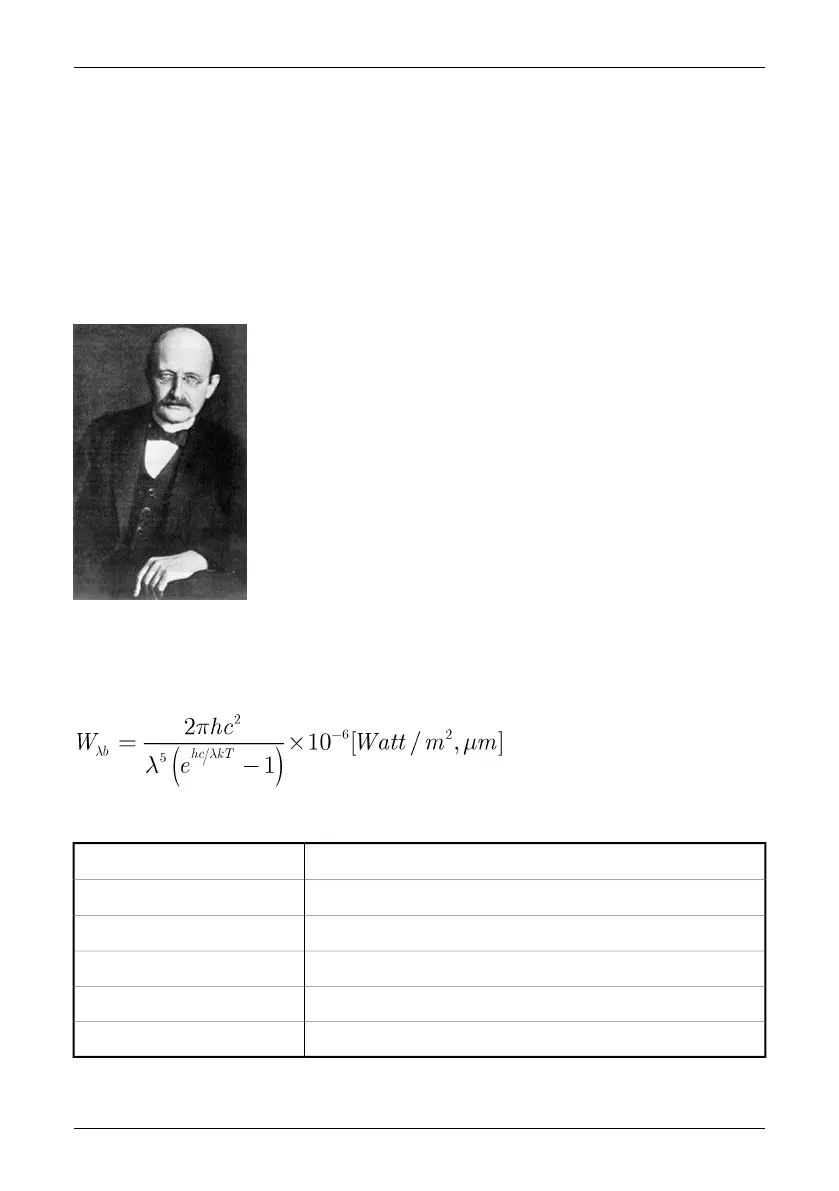If the temperature of blackbody radiation increases to more than 525°C (977°F), the
source begins to be visible so that it appears to the eye no longer black. This is the
incipient red heat temperature of the radiator, which then becomes orange or yellow
as the temperature increases further. In fact, the definition of the so-called color
temperature of an object is the temperature to which a blackbody would have to be
heated to have the same appearance.
Now consider three expressions that describe the radiation emitted from a blackbody.
21.3.1 Planck’s law
10399203;a1
Figure 21.3 Max Planck (1858–1947)
Max Planck (1858–1947) was able to describe the spectral distribution of the radiation
from a blackbody by means of the following formula:
where:
Blackbody spectral radiant emittance at wavelength λ.W
λb
Velocity of light = 3 × 10
8
m/sc
Planck’s constant = 6.6 × 10
-34
Joule sec.h
Boltzmann’s constant = 1.4 × 10
-23
Joule/K.k
Absolute temperature (K) of a blackbody.T
Wavelength (μm).λ
70 Publ. No. T559498 Rev. a461 – ENGLISH (EN) – August 19, 2010
21 – Theory of thermography

